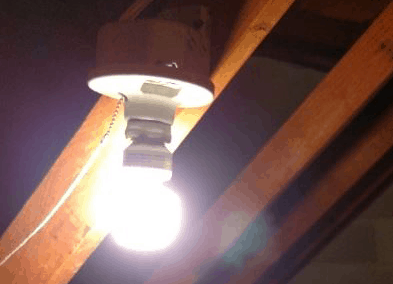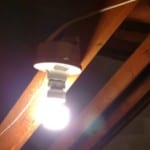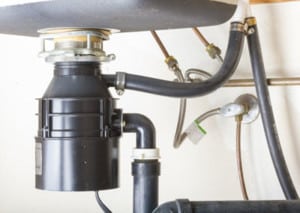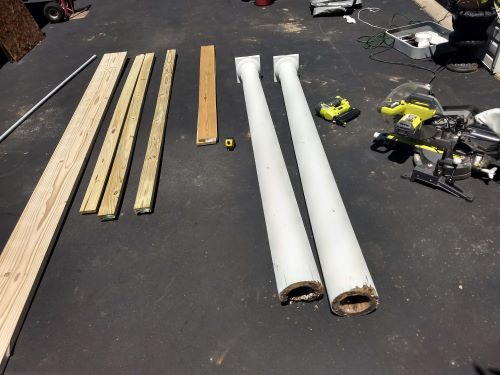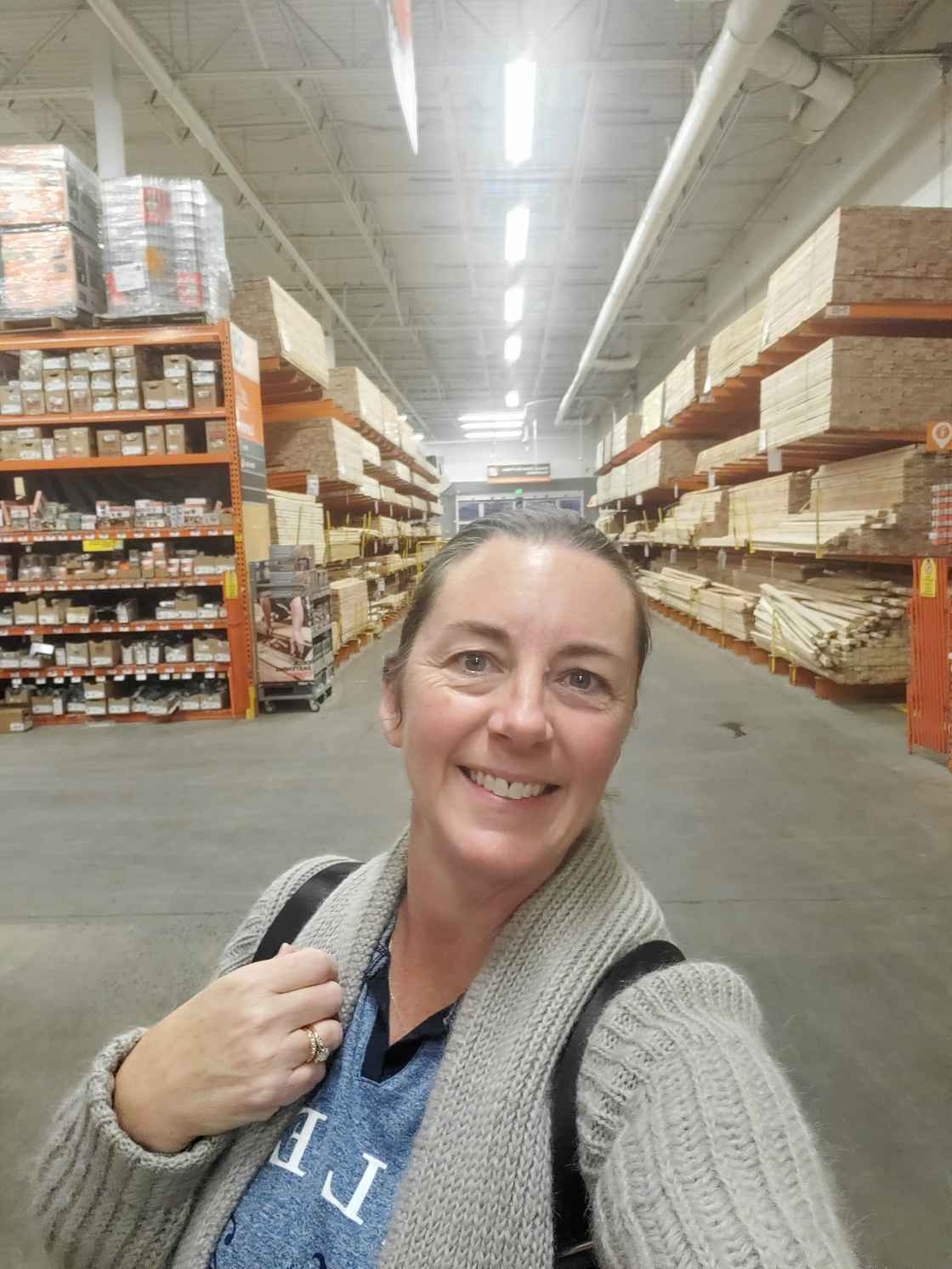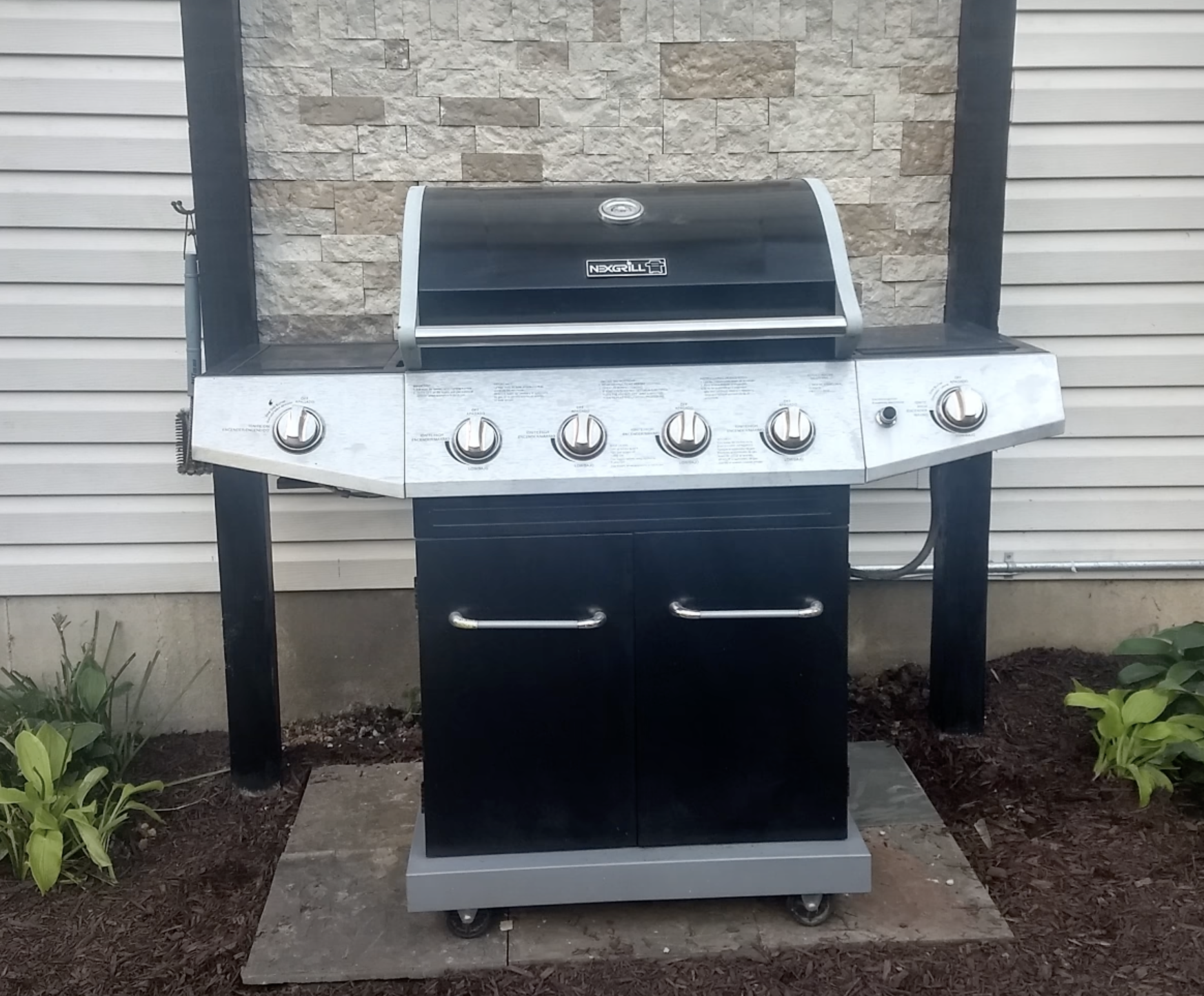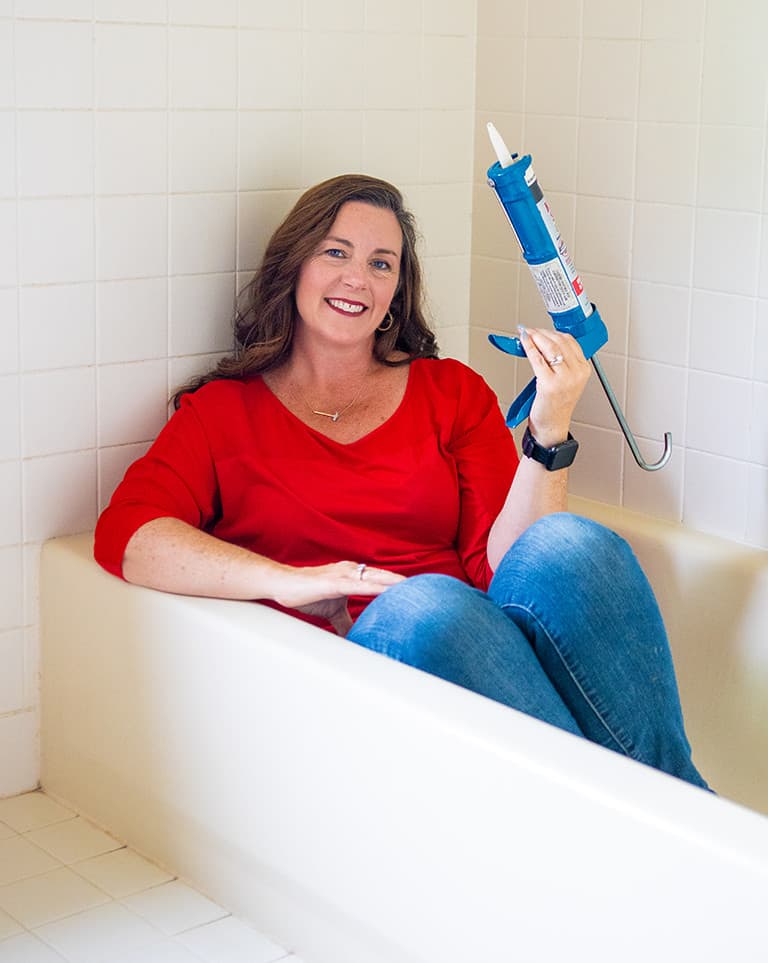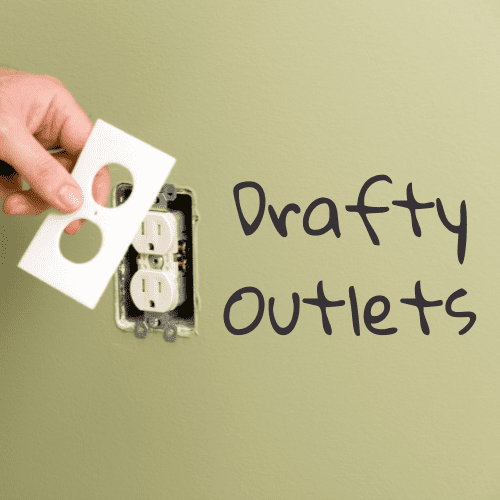I recently went to a client’s home. A newly divorced woman wanting to get her DIY groove on. I’m very excited to help her learn to manage her new place. Upon looking in her attic at an insulation issue. I noticed a lighting concern. There was an exposed bulb in a simple socket. It was a CFL bulb, Compact Fluorescent Light or swirly bulbs as I like to call them.
Does this look familiar to you?
Got lights like this in your attic, garage or basement?
So we have two issues here
1) An exposed bulb can easily be broken by moving boxes in the attic or just banging into it with your body. By building code in most towns, lights must be in a glass globe or metal cage to protect from damage. Please see the easy to install cage guard that you can add to existing fixtures without calling an electrician.
2) CFL bulbs carry some potential hazards when broken. Clearly broken glass is never good but when CFLs break they emit small levels of mercury. I am not a fan of them. My electrician tells me that as the cheaper quality CFLs age, they can break apart at the base and shoot sparks. They may be more energy efficient but I don’t like the risk of the mercury exposure either. The gov’t changed rules about safe mercury levels in fish, vaccines and took away our glass thermometers. All good moves but…
Why put it in our light bulbs? You decide for yourself if you are ok with them.
If a CFL breaks, there are EPA guidelines for proper disposal and handling.
Click here for full list of rules. BUT highlights are: open windows, remove kids and pets from the room, wear gloves and dispose of the waste at proper recycling center. I opt to skip this nonsense and buy LED or halogen bulbs, safer and longer lasting than CFLs or the old incandescent. If you buy LEDs make sure they are the dimmable kind if you are using a dimmer switch with that lighting fixture. My guy also recommends a brand called CREE and a cage on all bulbs without a cover. Click here to buy this bulb cover!
